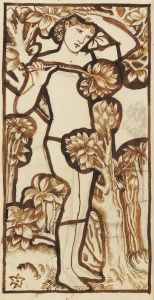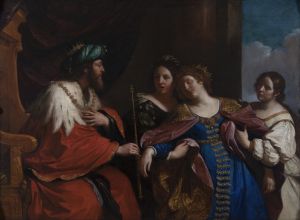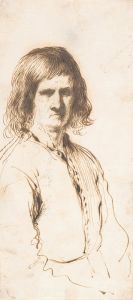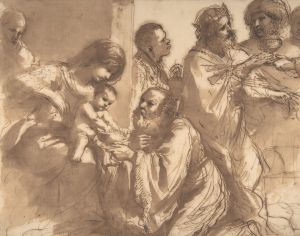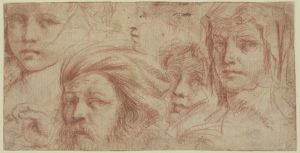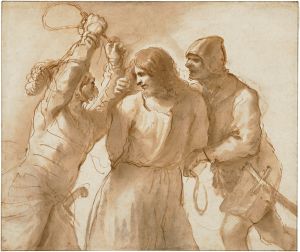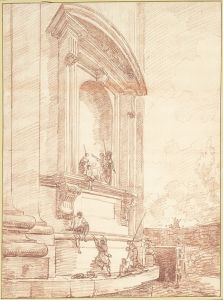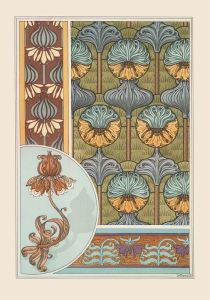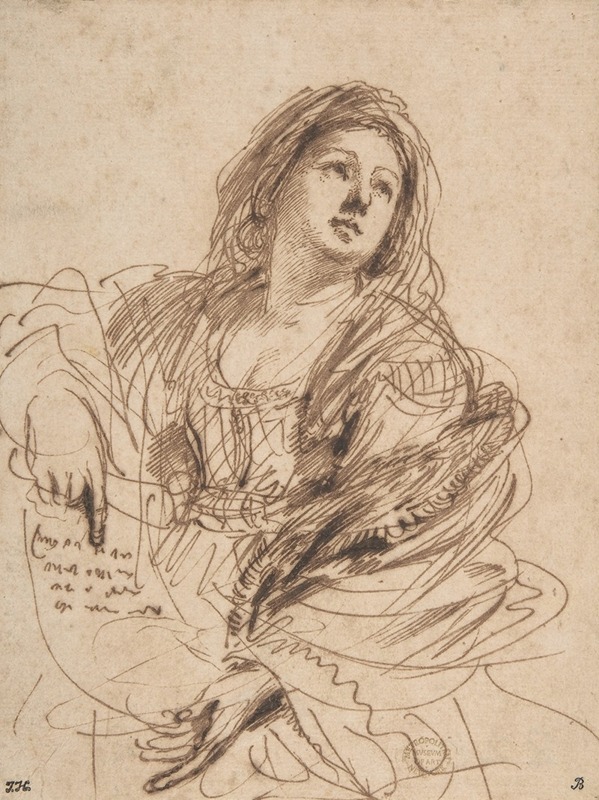
A Sibyl Holding a Scroll
A hand-painted replica of Guercino’s masterpiece A Sibyl Holding a Scroll, meticulously crafted by professional artists to capture the true essence of the original. Each piece is created with museum-quality canvas and rare mineral pigments, carefully painted by experienced artists with delicate brushstrokes and rich, layered colors to perfectly recreate the texture of the original artwork. Unlike machine-printed reproductions, this hand-painted version brings the painting to life, infused with the artist’s emotions and skill in every stroke. Whether for personal collection or home decoration, it instantly elevates the artistic atmosphere of any space.
A Sibyl Holding a Scroll is a painting by the Italian Baroque artist Giovanni Francesco Barbieri, commonly known as Guercino. The artwork, created in 1648, depicts a sibyl, a figure from ancient Greco-Roman mythology, who was believed to possess prophetic powers. The sibyl in this painting is portrayed holding a scroll, a common attribute in depictions of sibyls, symbolizing the written record of her prophecies.
Guercino was renowned for his dynamic compositions, dramatic use of light and shadow (chiaroscuro), and expressive figures. This painting exemplifies his mature style, characterized by a softer and more refined approach compared to the dramatic intensity of his earlier works. The sibyl is rendered with a sense of grace and introspection, her gaze directed away from the viewer, which adds an air of mystery to the composition. The scroll she holds is delicately detailed, emphasizing its importance as a symbol of wisdom and divine inspiration.
The painting is executed in oil on canvas, a medium commonly used by Guercino. His skillful handling of light and texture is evident in the way the sibyl's drapery and facial features are illuminated, creating a sense of three-dimensionality. The muted color palette and subtle contrasts further enhance the contemplative mood of the piece.
"A Sibyl Holding a Scroll" is part of the collection of the National Gallery in London, where it has been displayed since its acquisition in 1953. The painting is considered a fine example of Guercino's ability to combine classical themes with the emotional depth and naturalism characteristic of the Baroque period. It reflects the artist's interest in classical antiquity and his ability to reinterpret traditional subjects in a manner that resonated with the tastes of his patrons and audiences.
The work has been praised for its technical excellence and the psychological depth of its subject. It continues to be studied and admired as an important example of Guercino's contribution to 17th-century European art.





